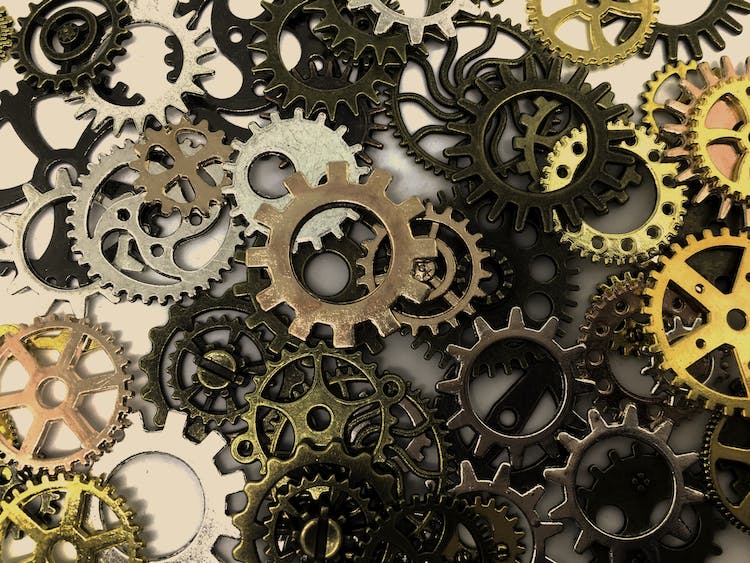Laser cutting is an incredibly versatile tool that has many applications across a variety of industries. In particular, it can be used to create durable rubber parts that can be used in a range of applications. From engineering to manufacturing, laser cutting has made it easier than ever to produce intricate, precise parts out of rubber that can be used in a wide range of projects. In this article, we’ll explore the process of harnessing the power of laser cutting for rubber parts, and discuss some of the advantages of using this method for rubber parts production.
How to Select a Laser Cutting System
Consider parts’ complexity
process When it comes to selecting a laser cutting system for rubber parts, one of the most important factors to consider is the complexity of the parts. Different types of rubber material have different cutting and engraving capabilities, meaning that when it comes to laser cutting, the complexity of your parts can determine which laser cutter is best suited for the job. Generally, more complex parts require more advanced laser cutting machines and process in order to achieve the desired results.
For simple parts, such as engraving rubber materials, a basic laser cutter can usually achieve the desired results.
Examine materials that the system can support
The success of laser cutting rubber parts depends on selecting the right laser cutting system. Before choosing a laser cutting system for rubber parts, it is important to evaluate the materials that the system can support. There are many types of laser cutters that can be used to cut and engrave rubber, such as CO2, Fiber, and YAG lasers.
Depending on the type of rubber material, the laser cutter should have specific capabilities to ensure that the cuts are precise and accurate. The thickness and composition of the rubber material should be considered when choosing a laser cutting system. Generally, CO2 laser cutters are ideal for cutting rubber that has a thickness between 0.5mm and 15mm.
Review the cutting speed and power
system When selecting a laser cutting system for rubber parts, it is important to review the speed and power of the laser cutter. Depending on the type of rubber being cut and the size, a laser cutting system with higher power and faster cutting speeds will be more efficient. Power affects the speed and depth of the cut, while faster cutting speeds allow larger areas to be cut in a shorter amount of time.
Furthermore, different types of rubber require different power settings. For example, softer rubber may need a lower power setting for a smoother cut, whereas firmer rubber might require a higher level of power.
Considerations for Laser Cutting Rubber
rubber When considering using a laser cutting system for your rubber parts, there are a few key factors to consider. The type of rubber, the type of laser available, the nature of the object to be cut, and the desired end product all play a role in determining which system would best suit your needs. The type of rubber is important as some lasers will not cut certain rubbers.
Maximum speed/acceleration
Maximizing the speed and acceleration of laser cutting rubber parts is essential for any operation. In order to cut rubber in a precise, efficient way, you need an industrial-grade laser cutter. Industrial laser cutters are designed to offer high levels of precision and accuracy at fast speeds, with minimal material loss.
Cutting resolution
system When it comes to choosing a laser cutting system for rubber parts, cutting resolution is one of the most important factors to consider. The resolution refers to the minimum distance between two cuts that the laser can achieve – the higher the resolution, the higher the level of detail you can expect from the cut. For a laser cutter to effectively cut rubber, its resolution must be particularly high and capable of producing patterns or engraving with a very fine finish.
If the laser cutter resolution is not high enough, the cuts could be less precise and the overall quality of the finished rubber parts could be compromised.
Support for various formats
When looking for a laser cutter to meet your rubber cutting needs, consider the system’s capabilities for supporting various file formats. The majority of laser cutting systems are able to engrave rubber quickly and accurately with support for .PNG, .JPG, .GIF, .BMP, .AI, .SVG and other vector format files. The different vector formats allow users to create their own custom design or simply upload their existing rubber part design in order to be cut.
Many laser cutting systems have the capability to preview the part before it is cut to ensure accuracy. This added functionality is beneficial in saving time and money.
Can a laser cutter cut rubber?
Yes, a laser cutter can cut rubber! Laser cutting is a precise and versatile method of cutting and engraving rubber materials. It works by using a highly focused laser beam to vaporize the material, which creates precise cuts and delicate engraving.
The laser beam creates a precise and uniform cut, making it perfect for detailed parts and components. Furthermore, it can engrave intricate patterns and decorative designs on rubber materials.

How thick can a 1kw laser cut?
When it comes to laser cutting rubber, the power of the machine affects how thick the material can cut through. A 1 kW laser cutter is capable of cutting through relatively thick rubber materials, such as those that are 2.5mm thick or greater. This is largely due to the high-precision nature of laser cutting and its ability to quickly cool the material being cut.
For thinner rubber materials such as those that are 0.8mm thick or less, a 0.5 kW laser cutter is typically used. When it comes to engraving rubber, the same rules apply but with lower power levels. For engraving thicker materials such as those that are 0.

What kind of rubber can be laser cut?
rubber Laser cutting for rubber parts is slowly becoming more popular as a way to create custom parts quickly and efficiently. When deciding what kind of rubber can be laser cut, it will depend on several factors. Generally, any type of rubber that is heat-resistant, non-reactive, and has an even surface will work well with laser cutting.
Some typical rubber types that can be laser cut include silicone, neoprene, nitrile, and EPDM.

Conclusion
Overview of the benefits of laser cutting for rubber parts
Laser cutting has long been a reliable manufacturing tool for cutting and engraving a variety of materials including rubber. With laser cutting technology, rubber parts can be cut to precise designs with a high level of accuracy and repeatability with speeds unmatched by other production methods. Laser cut rubber parts provide toughness, durability and reliability and are widely used in industries such as aerospace, automotive and medical device manufacturing.
The key benefits of using laser cutting for rubber parts include its speed and accuracy.
Summarize the steps for selecting a laser cutting system
When selecting a laser cutting system for rubber parts, it’s important to consider multiple factors to ensure the best result. One of the most important considerations is the type of laser source. Selecting a laser source that has the correct power and wavelength for the job will ensure that the cutting is done accurately and efficiently.
In addition, it’s important to consider the overall size of the laser system and the ability to meet the specific production needs.
Recap of considerations for laser cutting rubber
rubber As we come to the conclusion of our series on harnessing the power of laser cutting for rubber parts, let’s take a moment to recap the key considerations for those looking to pursue laser cutting for their rubber parts. At the outset, it is important to set realistic expectations for the finished product. Laser cut parts will be limited in accuracy and must be followed with a finishing step for inspection.
This can require additional time and money, so weighing these additional costs against the traditional cutting method should be done.


